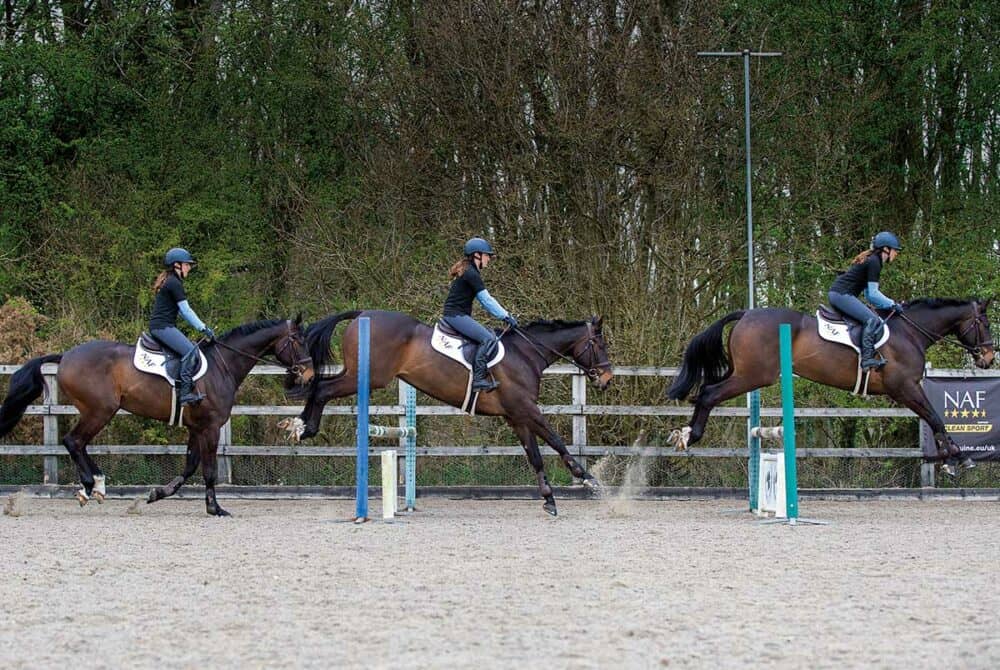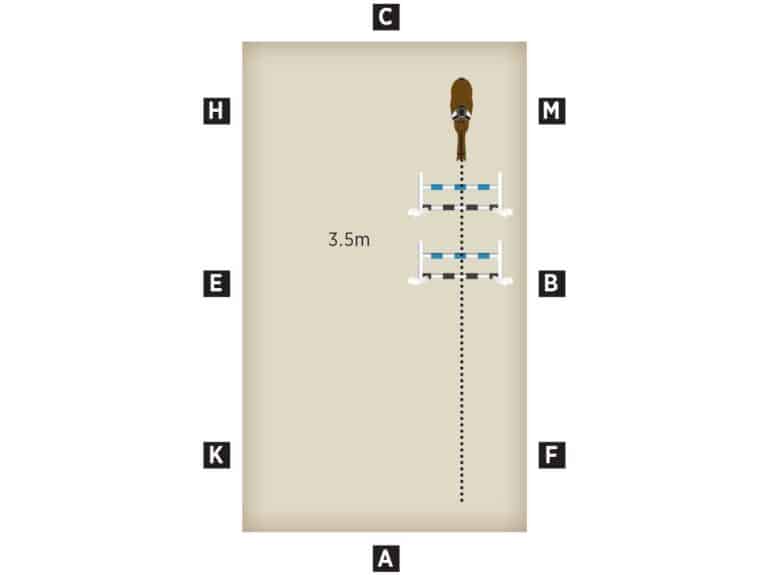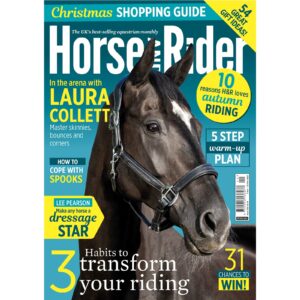Totally technical with Laura Collett
Posted 28th October 2022
Get your horse’s cross-country technique down to a tee before taking him out on grass next spring. Olympic eventer Laura Collett shows you how

The off-season’s often viewed as an opportunity for eventers to improve their dressage and showjumping skills before being able to get back onto grass for natural fences come spring. But, there’s no reason why you can’t make the most of your arena to improve your horse’s cross-country abilities, too.
So much of a horse’s aptitude for cross-country comes from practising focused flatwork, polework and gymnastic exercises, but there are technical fences you’ll find on course that are worth perfecting on a surface first.
Did you know?
Bounces are great for improving a horse’s reactions, but they also help a rider to stay with their horse’s movement and maintain their own balance.
On the bounce
For this, you’ll need…
- two pairs of wings
- four standard-length poles
- fillers (optional)
Bounces are beneficial additions to your jumping and gymnastic work, but you may come across them on the cross-country course, so it’s important your horse has seen them beforehand.
To introduce your horse to bounces…
- Set up the bounce as poles on the ground and ask your horse to tackle them in a forward, balanced canter. The distance might be a little longer than he’s used to for canter poles, but it shouldn’t be unachievable. Be sure to adjust the distance if he’s struggling.
- Raise the second pole into a cross-pole or small upright. You could approach in trot or canter but remember to focus on maintaining your horse’s rhythm. If you approach in trot, he might pop into canter over the first pole, so keep your hands soft and encouraging to allow him forward.
- When he’s confidently popping over the pole to the fence, you can raise the first pole into a cross-pole. Approach in a positive canter to help him make light of the distance and effectively bounce between the two. If the distance is a stretch for him at first, shorten it slightly, then gradually bring it back out again.
- The next stage is to raise the jumps into small uprights. Again, start with the second one, before raising the height of the first.

Check out Laura Collett’s top tips for tackling more technical fences in December Horse&Rider – on sale now!











